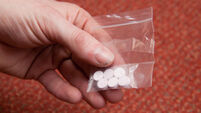Seizures fail to stop the drug flow
The global area under coca cultivation, the plant from which cocaine is manufactured, has fallen by 30% between 2000 and 2006.
In addition, the percentage of all cocaine shipments intercepted by law enforcement has almost doubled in the same period.
The United Nations now estimates that 42% of all cocaine traffic is seized, compared with 24% in 2000. This is a much higher seizure estimate than the common 10% figure bandied about in the media.
But despite these positive trends, there appears to be no shortage of cocaine, particularly in Europe.
The UN says consumption increased significantly in Europe over the past decade, doubling or tripling in several countries.
Not only that, but the price of cocaine and other drugs has fallen across Europe in the same period. This emerged from data compiled by the European Monitoring Centre for Drugs and Drug Addiction and published in a report last November.
“Indeed prices have come down, whatever we are seizing is not hitting the market,” said Carel Edwards of the European Commission anti-drug policy unit. He said one British government study suggested that 80% of drug supplies would have to be intercepted to seriously disrupt supply.
The UN World Drug Report 2007 said Ireland had one of the biggest percentage rises in cocaine seizures in western Europe in 2005. Not only that but Ireland is in the top five countries in the world for the biggest growth in cocaine use.
This growth is reflected in a range of Irish statistics — including seizures, cocaine-related offences and treatment for cocaine addiction.
“Cocaine has come from a very low base six or seven years ago and has gone up every year since, with a small reduction last year,” said Michael Colgan of the Revenue Commissioners’ customs drug law enforcement unit.
“Cocaine is increasingly the drug of choice and is being imported in increasing quantities,” said Mr Colgan.
He said Customs were regularly seizing 1kg to 3kg of cocaine at the airports, particularly in Dublin.
He said the routes by which cocaine were getting into Europe and Ireland was becoming more diverse, making interception all the more difficult.
The cocaine manufactured in Colombia, Bolivia and Peru makes its way to Europe mainly by sea, often through places like Venezuela, Ecuador and the Caribbean.
The UN says the main entry point in Europe is Spain, accounting for 48% of European seizures, followed by Portugal (18%) and the Netherlands (14%). Almost 50 tonnes of cocaine was seized in Spain in 2005.
But the report said an emerging trend in recent years has been a route through West Africa: “West African groups involved in cocaine trafficking are becoming increasingly visible in a number of European countries.”
Mr Colgan agreed: “The most significant development has been the emergence of West Africa as a staging post. They don’t have a high level of law enforcement capability and from there the drug is getting into Europe by vessel, air and land.”
He said Ireland got most of its cocaine by air. Because there are no direct flights from South America or West Africa, the flights are coming through leading European hub airports, such as Charles de Gaulle, London and Schipol in Amsterdam.
He said the West African gangs were now using people from the new eastern European member states to transport the drugs through the EU.
“While West Africans are the organising minds, they are recruiting people who will assimilate well. People from the new EU countries from eastern Europe have free access across the EU,” said Mr Colgan.












